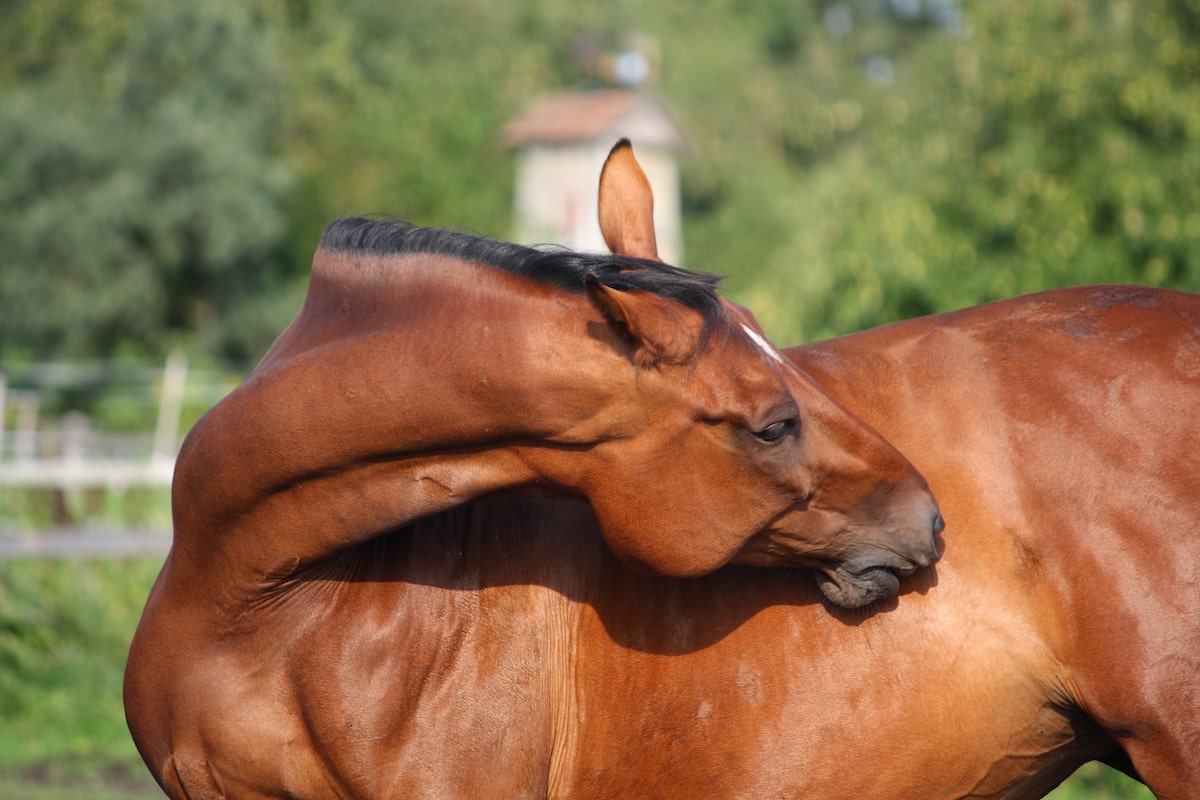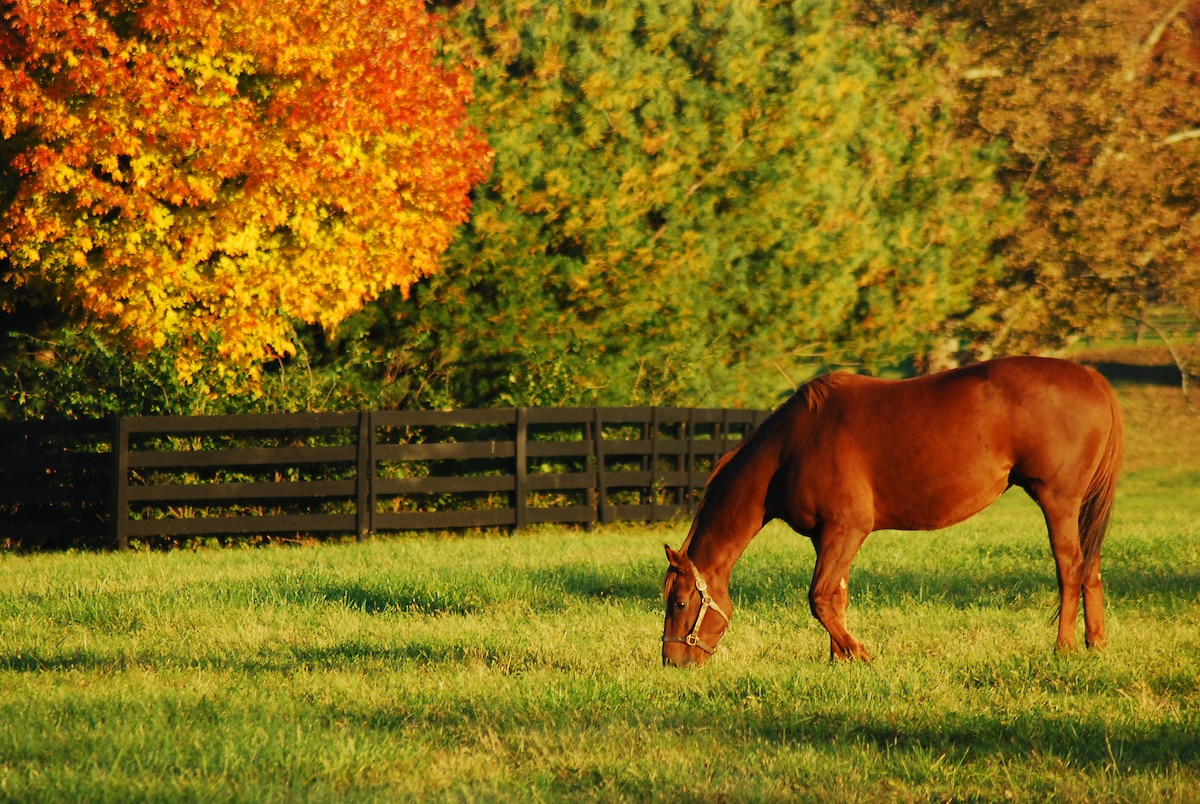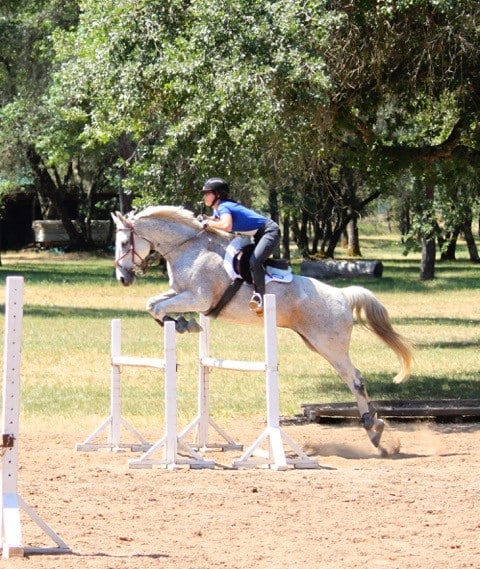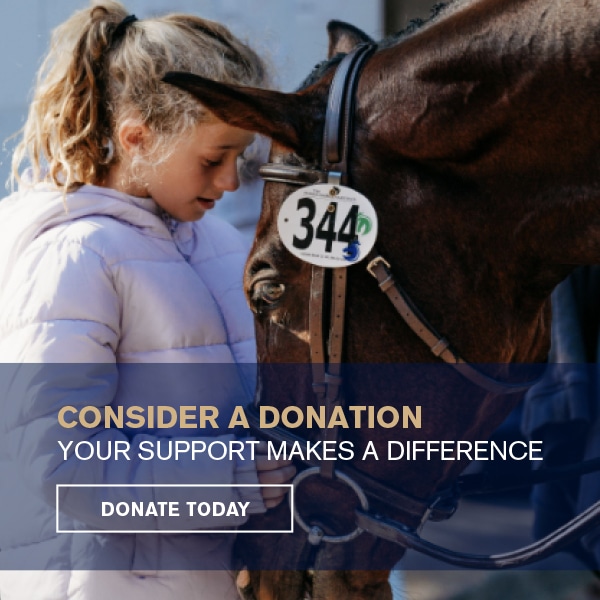Whether transitioning off the track or flourishing in a new career, OTTBs are vulnerable to gastrointestinal upset.

Colic, or abdominal pain, is the leading killer of all breeds and types of horses. Courtesy istock.com
It doesn’t matter whether you’ve owned your Thoroughbred for years, are still in the process of letting him down from the track or will be picking him up from his race trainer’s barn tomorrow. He’s at risk of colic.
Most cases are fairly mild and resolve with medical treatment. But there’s a reason colic — simply defined as abdominal pain — is still the No. 1 killer of horses: Severe cases are bad news.
We can’t prevent all colics, and researchers still don’t know why some develop. But they’ve learned a lot about why common types of colic occur and have come up with ways horse owners can help reduce the risk.
First, it’s important to understand what increases a horse’s chances of colicking.
While horses’ musculoskeletal and respiratory systems function efficiently and allow them to perform impressive athletic feats, their gastrointestinal (GI) tract design is not quite as practical. Every bite of food an average-sized horse consumes must travel through nearly 100 feet of twisting and turning intestines and structures that change significantly in shape, size and function from one section to the next. Add the fact that horses evolved to eat small amounts of forage throughout the day, when we now tend to feed meals containing large amounts of concentrates once or twice daily, and you’ve essentially got an environment primed for and susceptible to colic.
Owners can also increase colic risk inadvertently in their horse health care and management choices. Some of the most common issues arise from:
■ Poor dental care Teeth with sharp points or other dental abnormalities can cause pain during chewing, says Tracy Norman, VMD, Dipl. ACVIM, an equine practitioner at Blue Ridge Equine Clinic, in Earlysville, Virginia. This can reduce a horse’s desire or ability to chew properly, resulting in larger feed particles traveling through the GI tract — a proven colic risk factor.
■ Rapid feed changes Quick transitions in diet can also increase colic risk. This is because different feeds affect the GI population of good microbes that help break down the complex starches in horses’ diets, Norman says.
“When these populations shift, motility (movement in the gut) can be affected and an increase in gas-producing bacteria can occur, which can result in gas colic,” she says.
■ Reduced water intake Dehydration is a common colic risk factor. “Water might be available, but if it isn’t clean, or it is very cold (horses are reluctant to drink very cold water, especially in the winter), or if it’s in a location that is difficult or unpleasant to get to, the horse’s intake might be insufficient,” Norman says. “Some horses, just like some humans, aren’t very smart about keeping themselves well-hydrated in the heat, so giving them some electrolytes or plain salt can help encourage drinking.”
■ Improper parasite control Norman says internal parasites lead to colic by causing blockages or areas of irritation in the GI tract.
If you’ve known your horse for years, you can probably tell when he’s not drinking as much as he normally does or when he’s due for a dental float. It can be more challenging, however, to know how much your new OTTB normally drinks overnight, or how quick a transition to his new hay is too abrupt for his system.
Other colic risks factors for any horse, whether fresh off the track or in your barn for years, include gastric ulcers, frequent travel or an often-changing hay supply. Norman and OTTB owner Sarah le Jeune, DVM, associate professor of equine integrative sports medicine at the University of California, Davis, School of Veterinary Medicine, offer their advice for keeping OTTB GI tracts healthy at all stages of their lives.
Transitioning Off the Track
“Any change in management can increase the risk of colicking,” le Jeune says, particularly the transition from racing to another career.
A horse coming off the track is faced with a significant routine change, a new home, a different diet and likely some stress — another colic risk factor. Further, researchers have shown that up to 90 percent of racehorses have gastric ulcers, so there’s a good chance your newly minted OTTB does, too.
“Gastric ulcers themselves can be painful, and any change, even one to an easier lifestyle, can add fuel to the gastric ulcer fire,” Norman says. “Ulcers can also affect the motility of other parts of the intestinal tract, which can lead to gas accumulation and/or impactions, both of which can cause colic.”
Your veterinarian might recommend gastroscopy — running an endoscopic camera through the horse’s nose, down the esophagus and into the stomach — to confirm if ulcers are present in the retiring racehorse. If they are, Norman and le Jeune recommend nipping them in the bud with a course or more of omeprazole (GastroGard). The preventive version of this drug, UlcerGard, might be appropriate in the horse that doesn’t have ulcers but is prone to them. Consult your veterinarian to determine which is best-suited for your horse’s needs.
In the meantime, give your horse time to adjust to his new surroundings and routine — don’t change everything at once.
One of your top priorities should be to modify your recently retired racehorse’s diet slowly. Le Jeune recommends making any feed transition over about a week’s time.
“It is important to understand that when horses are racing or in race training, they are fed lots of concentrate feed to meet their nutritional requirements,” Norman says. “All that feed isn’t needed when the horse is no longer at the track.”
Our sources recommend slowly reducing — or even eliminating, if possible — concentrates or grain in the diet and providing plenty of good-quality forage. Le Jeune says adding alfalfa can help buffer acid in the stomach and prevent ulcer formation, as well.
“Also, it’s OK if the horse’s body condition ‘falls off’ a bit at first, as the horse transitions from one set of physical expectations to another,” Norman adds. “Expecting a lean running machine to instantly take on the smooth curves of a show hunter isn’t realistic and could lead to problems with stomach upset or behavioral problems as a result of overfeeding for the type of work that is being done.”
Additionally, and unless your horse requires stall rest to help an injury heal (these horses face their own colic risks, as we’ll discuss in the sidebar), begin to introduce pasture time slowly.
“If the horse isn’t used to turnout and hasn’t been with other horses, allow the horse some stall time daily, and don’t introduce friends until the horse has had a chance to settle in a bit,” Norman says.
And, because the new OTTB is accumstomed to a structured exercise routine, le Jeune recommends incorporating regular light exercise — nothing too strenuous or mentally taxing at first — to keep both his mind and gut happy.
“Resisting the urge to teach the horse everything he needs to do in his new life right away will give him an opportunity to learn slowly, which is bound to be less confusing and less stressful,” Norman says. “Many OTTBs really need time to adjust to a new way of being a horse.”

If your OTTB is right off the track and not used to regular turnout, introduce pasture time (and buddies) slowly. Courtesy istock.com
During Retraining and Second Careers
Here are some measures you can take to reduce colic risk in the OTTB that’s started retraining or is flourishing in a second career.
Start with the basics we’ve already described:
■ Keep horses up-to-date on parasite control and dental work;
■ Make any feed changes gradually;
■ Ensure constant clean water access;
■ Reduce the amount of grain and/or concentrate in your horse’s diet, if possible; and
■ Provide plenty of good-quality forage, possibly including alfalfa for its buffering effects.
For horses that have resumed moderate- to high-intensity exercise, le Jeune recommends ensuring they’re consuming enough salt to replace losses from sweat.
“They’ll need 1-2 tablespoons per day, depending on workload, sweat losses and how much is provided by feed or salt block,” she says.
Don’t forget that racehorses aren’t the only group of horses that can suffer from gastric ulcers. Study results show that 60 percent of English performance horses, 40-75 percent of Western pleasure or performance horses and 53 percent of pleasure or leisure horses have gastric ulcers. Work with your veterinarian to determine whether your horse would benefit from omeprazole administration.
There are also many dietary supplements marketed to help protect equine stomachs; however, not all have been studied in clinical trials. Your veterinarian or equine nutritionist can help you select a product that could work for your horse.
Also, Norman says, “keeping an eye out for stressors that might change the horse’s GI motility and microbes is key. Common ones include shipping; changes in exercise or training schedules; weather shifts and the use of medications, such as anti-inflammatories and antibiotics, which have been shown to alter the microbiome (the microorganisms in an environment — in this case, the gut). When these stressors are in play, using medication to prevent ulcers and pre- and probiotics to protect a healthy balance in the microbiome may help to prevent colic.”
Finally, keep your horse’s digestive tract in mind when making management choices.
“The GI tract of a horse is designed for almost constant grazing and walking and a forage-based (grass and hay) diet,” Norman says. “Keeping as close to this model as possible is the best way to keep the GI tract happy. Being sensitive to the fact that the way in which we use horses forces their lifestyle away from this natural state goes a long way toward understanding how to nurture a healthy gut.”

Dr. Sarah le Jeune takes steps to keep her own OTTB, Wiley, free of gastric upset. Courtesy Dr. Sarah le Jeune
Take-Home Message
“Any horse can colic, even with the very best management — in fact, some of the worst kinds of colic that would require hospitalization and even surgery are true intestinal ‘accidents’ that, as far as we understand, happen independently of any management efforts — so owners shouldn’t be too hard on themselves if their horse does colic,” Norman says. “However, having a good relationship with a veterinarian to ensure that the horse’s teeth are kept in good order, gastric ulcer and parasite risks are being managed and the horse has a well-balanced diet with plenty of water intake will keep the horse’s gastrointestinal tract running as well as it can.”
Risky Stall Rest
Being on stall rest to rehab an injury can increase a horse’s colic risk, says Sarah le Jeune, DVM, associate professor of equine integrative sports medicine at the University of California, Davis, School of Veterinary Medicine.
“Stall confinement is a significant stressor and has been identified as a predisposing factor for gastric ulceration,” she says. “Reduced physical activity can also lead to gastrointestinal (GI) stasis, which can lead to impaction colic.”
Horses that require sedation to keep quiet on stall rest could be at extra risk, as these medications typically reduce GI motility (movement). However, Le Jeune says acepromazine is relatively safe if a horse requires a sedative.
The good news is owners can take simple steps to keep stall-resting horses’ guts happy and their colic risk low.
“Ensure access to good-quality forage and clean water throughout the day to prevent boredom and maintain gastric fill,” le Jeune says. “Horses secrete gastric acid continuously, so keeping a full stomach is protective against stomach ulceration. A slow feeder can help with that.”
Also, avoid leaving horses alone in the barn, and be sure they have the opportunity for social interaction with other horses to help reduce stress.
“Moving the horse to a stall-sized outdoor pipe pen can also help,” she says.
Of course, every horse is different. Consult your veterinarian if you have questions about maintaining your OTTB on stall rest.

